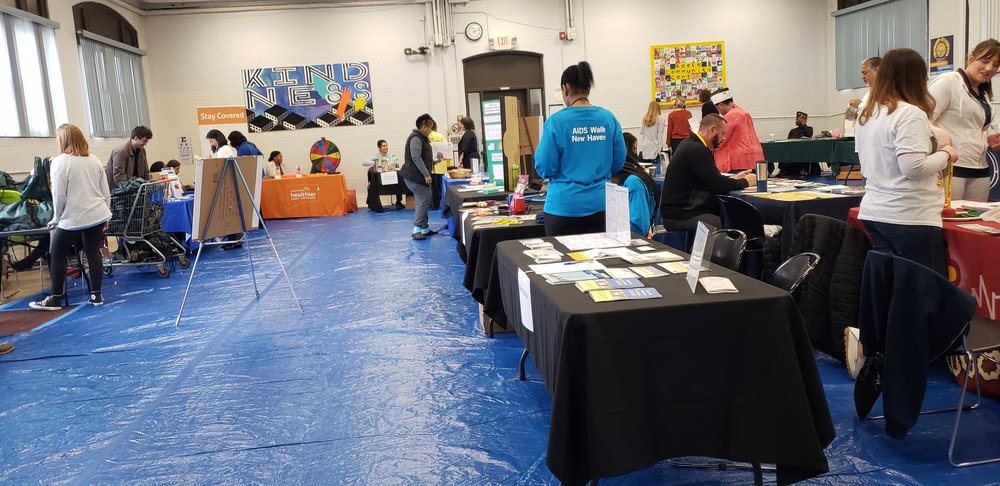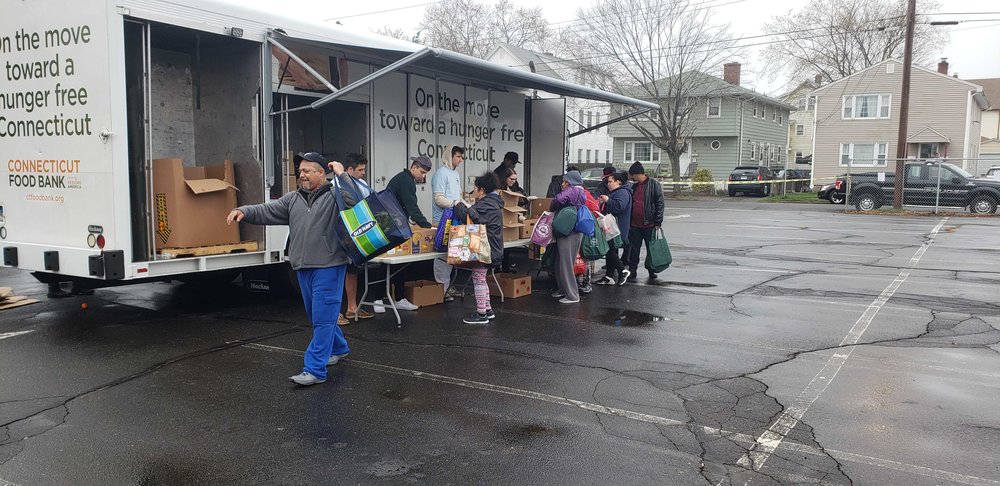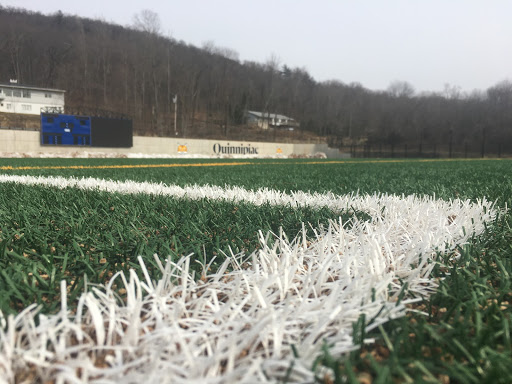By Ross Lager
The Keefe Community Center in Hamden hosted its first free community health fair on Saturday, April 13.
The event lasted from 10 a.m.- 2 p.m. and had over 20 providers present, offering information about health concerns and benefits including, dental care, nutrition, eyesight, food banks and therapy.

The Keefe Community Center held its first community fair Saturday. (Photo: Ross Lager)
Nancy Juliano, a Hamden resident and member of the Making Strides Against Breast Cancer committee, had her Paint Hamden Pink station to spread awareness for breast cancer.
“Events like these are very important and should happen more often,” Juliano said. “People can learn about breast cancer but I can also spread awareness and grow support for the people and families affected by this disease.”
Attendees had the chance to learn about and seek possible treatments for diseases such as sickle cell anemia, breast cancer and AIDS.
The Quinnipiack Valley Health District, Yale-New Haven Health Hospital and representatives from the Town of Hamden were present, providing information about services for mammograms, diabetes and how to better care for your body.
Nearby universities such as Quinnipiac University, Yale University, the University of Connecticut and Southern Connecticut State University each had a station with student representatives available to speak about topics such as AIDS care, cancer and nutrition.
A food pantry truck was set up for an hour to give away free fresh products such as vegetables, fruit, cold cuts and drinks.

Attendees visit the Connecticut Food Bank truck. (Photo: Ross Lager)
The Community Services Coordinators at the Keefe Center, Y’Isiah Lopes and Anne Marie Karavas, said they believe the first health fair was a success.
“It was a good turnout,” Karavas said. “There were about 160 people here today.”
While attendance numbers are important, Lopes said he is happy to provide services for the community and help any number of people in any way possible.
“As long as we are offering the community something, you can never predict the number,” he said. “We could have had five people or 500. In the end, I can leave happy saying that we provided information and education for those who may need it.”
Lopes explained that this event will serve as a pilot program to help the Keefe Center understand how community members will respond to a health fair and how to better serve their needs for the next one.
He stressed the importance of bringing more awareness to the event as the Keefe Center’s goal is to spread the word as much as possible.
“I think we should work with the faith-based organizations like churches and have them help spread this information to their congregations,” he said.
Lopes said that he and his team have a lot to learn from this event about ways to improve it in future years. He said he hopes to make next year’s event bigger and better.
“We are going to recap from this event, see what we can do better, what we did well and what we can change moving forward,” Lopes said.

